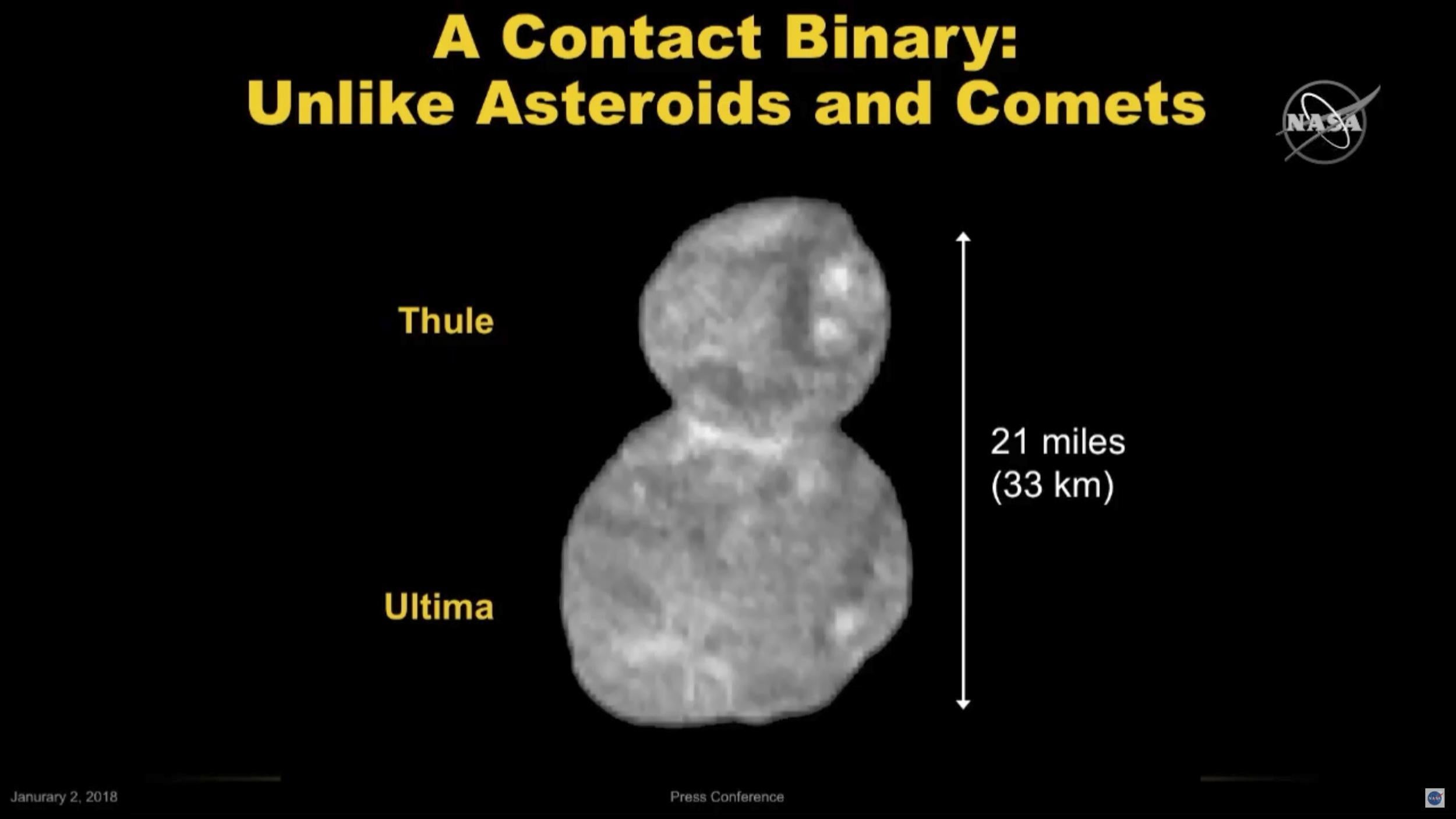Ultima Thule: Nasa unveil remarkable picture of the most distant world ever explored
Detailed images could be a look at the very beginnings of the planets in our Solar System
Your support helps us to tell the story
From reproductive rights to climate change to Big Tech, The Independent is on the ground when the story is developing. Whether it's investigating the financials of Elon Musk's pro-Trump PAC or producing our latest documentary, 'The A Word', which shines a light on the American women fighting for reproductive rights, we know how important it is to parse out the facts from the messaging.
At such a critical moment in US history, we need reporters on the ground. Your donation allows us to keep sending journalists to speak to both sides of the story.
The Independent is trusted by Americans across the entire political spectrum. And unlike many other quality news outlets, we choose not to lock Americans out of our reporting and analysis with paywalls. We believe quality journalism should be available to everyone, paid for by those who can afford it.
Your support makes all the difference.Nasa has revealed an intricate new photo of the bizarre shape of Ultima Thule, the most distant object ever to be explored by humanity.
The image was sent back by the New Horizons spacecraft, which has already explored Pluto in greater detail than ever before. The new picture shows the latest object – floating millions of miles from Earth – which sits in the distant and mysterious Kuiper Belt on the edge of our Solar System.
"This flyby is a historic achievement," said New Horizons principal investigator Alan Stern. "Never before has any spacecraft team tracked down such a small body at such high speed so far away in the abyss of space. New Horizons has set a new bar for state-of-the-art spacecraft navigation."
The object had previously been compared to a peanut for its long ends and thin middle. But the newest pictures show it being shaped more like a snowman, made up of two rounded spheres that are connected in the middle.
Nasa said Ultima Thule was once two separate objects, made up of what Nasa calls a "contact binary". It was probably formed when a cloud of smaller, icy objects swirled around and began to combine – eventually, they formed two bigger bodies that swirled around each other until they touched and created the world that New Horizons has since explored.

The two objects have probably been joined up for 99 per cent of the length of the Solar System said, Nasa said, nudging rather than smashing into each other in the beginnings of our neighbourhood. As such, it could be a way of looking back into the beginnings of our planets and those that surround us.
"New Horizons is like a time machine, taking us back to the birth of the solar system. We are seeing a physical representation of the beginning of planetary formation, frozen in time," said Jeff Moore, New Horizons Geology and Geophysics team lead. "Studying Ultima Thule is helping us understand how planets form — both those in our own solar system and those orbiting other stars in our galaxy."
The team behind the mission have dubbed the big sphere "Ultima" and the smaller one "Thule". The name was bestowed on the object after a public competition in 2018, and is a reference to a Latin metaphor for places beyond the edges of the known world – though has drawn some criticism for its connection to Nazi imagery.

The images were taken from just 17,000 miles away, of an object stretching only about 20 miles in length. (Ultima is roughly 12 miles up, while Thule makes up the other nine.)
Still, the best colour close-ups won't be available until February. Those images should reveal whether Ultima Thule has any rings or moons, or craters on its dark, reddish surface. Altogether, it will take nearly two years for all of New Horizons' data to reach Earth.
The observations should help scientists ascertain how deep-freeze objects like Ultima Thule formed, along with the rest of the solar system, 4.5 billion years ago.
As a preserved relic from that original time, Ultima Thule also promises to shed light on the so-called Kuiper Belt, or Twilight Zone, in which hundreds of thousands of objects reside well beyond Neptune.
"This mission's always been about delayed gratification," Stern reminded reporters. He noted it took 12 years to sell the project, five years to build it and nine years to reach the first target, Pluto.
Its mission now totaling $800 million, the baby grand piano-sized New Horizons will keep hurtling toward the edge of the solar system, observing Kuiper Belt Objects, or KBOs, from afar, and taking cosmic particle measurements. Although NASA's Voyagers crossed the Kuiper Belt on their way to true interstellar space, their 1970s-era instruments were not nearly as sophisticated as those on New Horizons, Weaver noted, and the twin spacecraft did not pass near any objects known at the time.
The New Horizons team is already pushing for another flyby in the 2020s, while the nuclear power and other spacecraft systems are still good.
Bowman takes comfort and pleasure in knowing that long after New Horizons stops working, it "will keep going on and on."
"There's a bit of all of us on that spacecraft," she said, "and it will continue after we're long gone here on Earth."
Additional reporting by agencies

Join our commenting forum
Join thought-provoking conversations, follow other Independent readers and see their replies
Comments